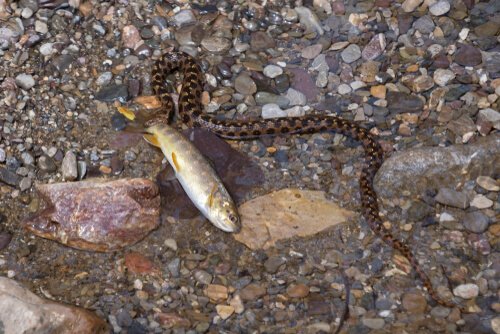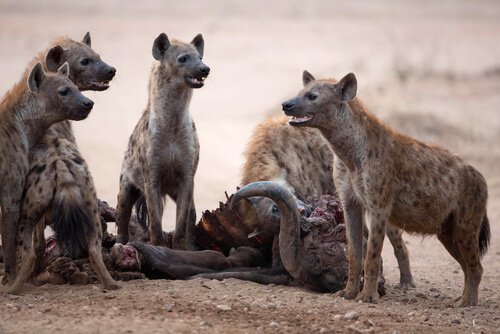Cleptoparasitism, examples and curiosities
Cleptoparasitism is defined as "the theft of a prey or other food previously captured by an individual by another individual." It is also known as 'food parasitism'. The concept was introduced to define a theft of food that occurred between individuals of different species, so it was called interspecific kleptoparasitism.
However, at present it is also used to define the action of individuals of the same species and is defined as intraspecific kleptoparasitism. The kleptoparasite is the one that steals, while the host or host is the one that is stolen.
The concept was introduced in the 1950s by Rothschild and Clay, specifically in 1952. Currently, is recognized as a food strategy that allows obtaining limiting resources . In 1979, Brockmann and Barnard differentiated between two groups:
- Specialists. They have a series of morphological adaptations, as the possibility of increasing the speed of the flight as well as the maneuverability. In addition, most of the food they obtain is through this practice. It is interspecific kleptoparasitism.
- Opportunistic. Those that only steal food at certain times , as when it is visible at the peak of the host. These animals perform this practice intraspecific and interspecific.
There are different studies that collect information about this curious practice between species. This concept does not refer only to the theft of food, but also refers to the theft of materials , for the construction of nests, etc.
The bibliography has focused on the study of this ecological interaction between birds, specifically seabirds. However, there are also recorded cases of kleptoparasitism in different groups of animals, both vertebrates and invertebrates.
Factors that influence kleptoparasitism
Among the factors that may affect this strategy, The following are found:
- Environmental conditions.
- The number of potential hosts in relation to the number of kleptoparasites.
- The size of the kleptoparasite with regarding the host.
- The number of kleptoparasites involved in a persecution.
- Tactic used by the kleptoparasit.
- Nutritional quality of the disputed dams.
Examples
Viperine or water snake ( Natrix maura ).
The habitat of the viperine snake is located in the Western Mediterranean, including the Iberian Peninsula, where it is widely distributed. Its diet is mainly focused on fish and amphibians.

Although, recently, the practice of intraspecific kleptoparasitism has been observed. This consists in the theft of a prey from an individual of a species by an individual of the same species.
The funny thing is that kleptoparasitism had only been studied in some reptile species and never in the reptile Natrix maura . Apparently, this technique is typical in regions of high densities, where prey can not be easily ingested.
Canarian buzzards ( Buteo buteo )
The buzzard buzzard is a bird that belongs to the species Buteo buteo . These birds are seen in the two roles of kleptoparasitism. On the one hand, they are forced to give their food to larger raptors.In the busardos, kleptoparasitism has an opportunistic character: before encountering an avian species, they take advantage of it and take away their prey.
Hyenas
Hyenas belong to the family Hyaenidae and could be said to be the kleptoparasitic mammal more representative. Primarily they are known as scavenger mammals, but they also practice kleptoparasitism when they have the chance.

This family is present only in the African continent due to a series of events, such as climate change and human action.
Curiosities
This practice has been observed in invertebrates, with the arthropods as one of the groups. Within the arthropods, we have as an example the spiders, like the study on the species Argyrodes elevatus.
As it seems, This spider practiced kleptoparasitism with the aim of courting another spider. That is, it is a nuptial gift. The male stole a prey within the community network of his host, Metepeira incrassat . The prey gave it to a female spider and, while the female spider fed, the male copulated with her. It is the first recorded case of kleptoparasitism in Argyrodes elevatus with the aim of a nuptial gift.
Cleptoparasitism is a little known but very interesting strategy. Animals adopt behaviors that allow them to survive and evolve, even at the expense of other individuals. Animals have another series of curious behaviors, such as coprophagia.


